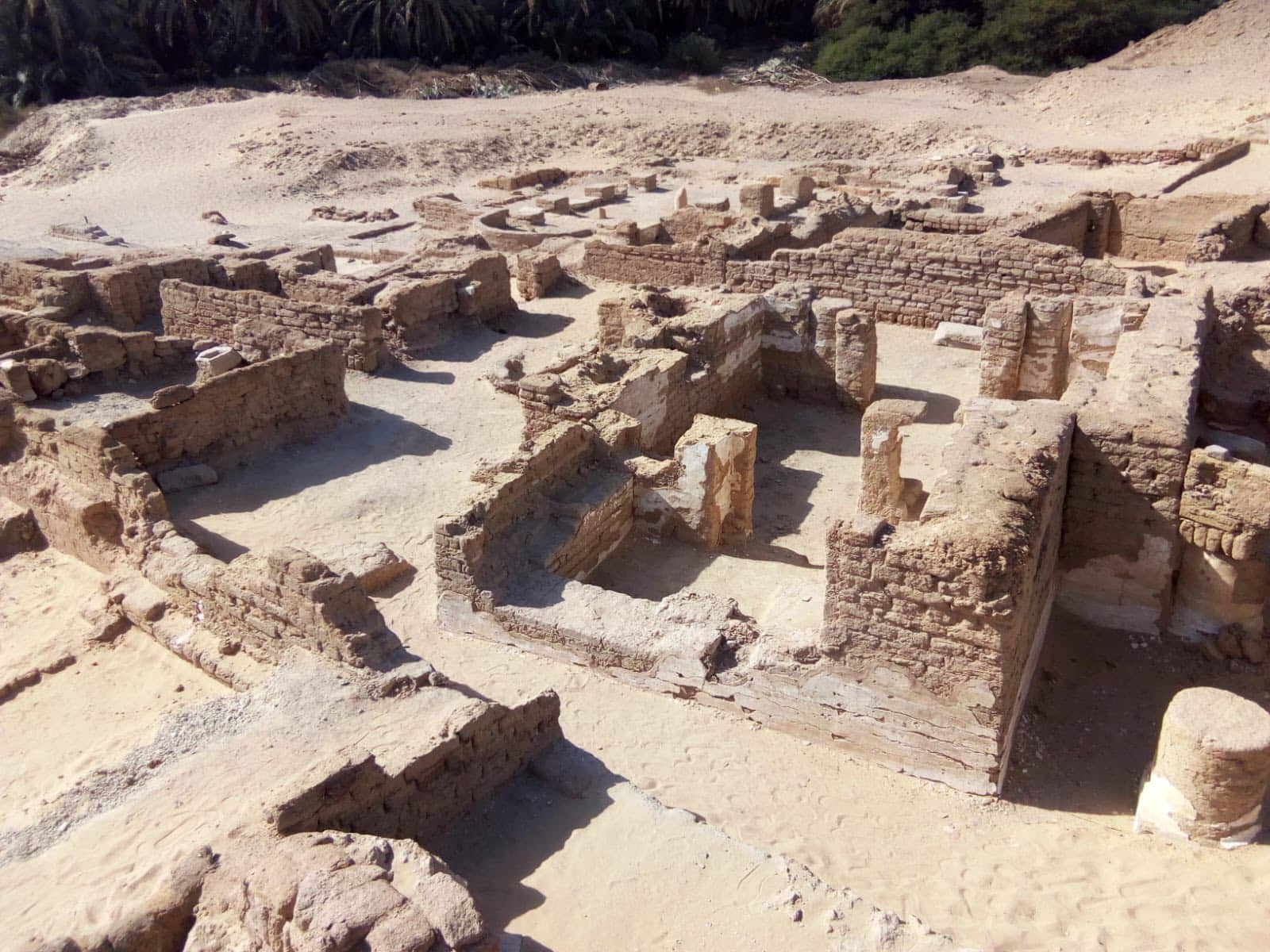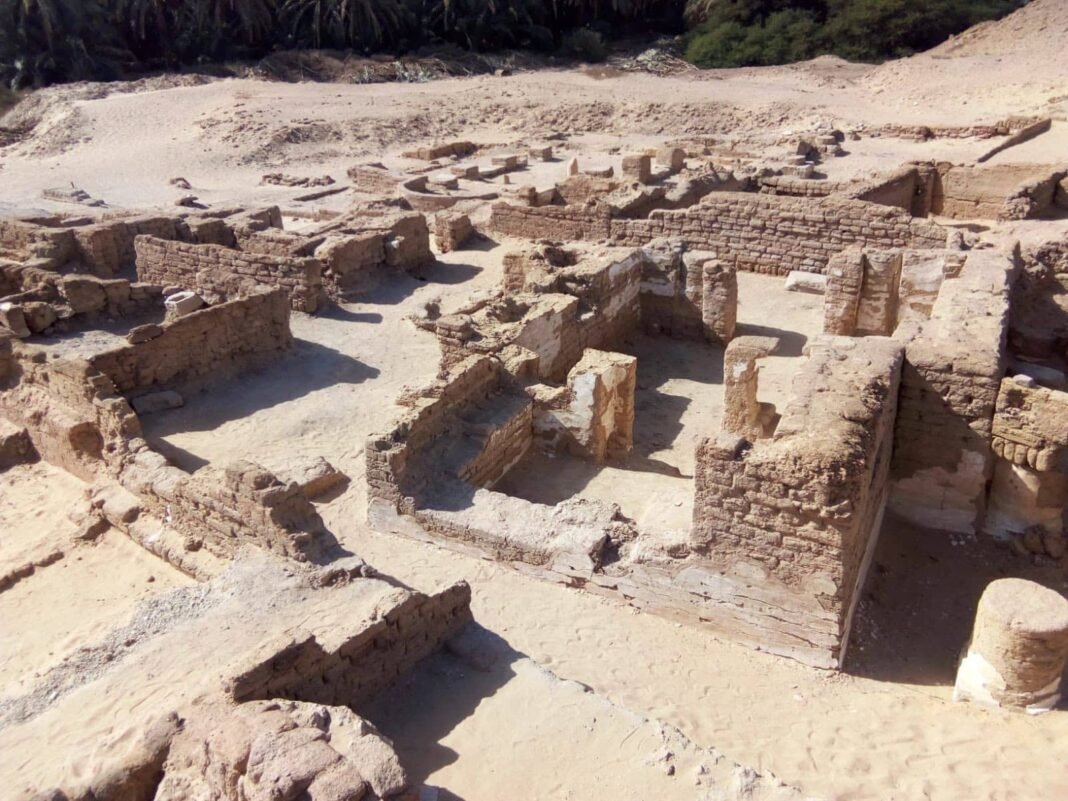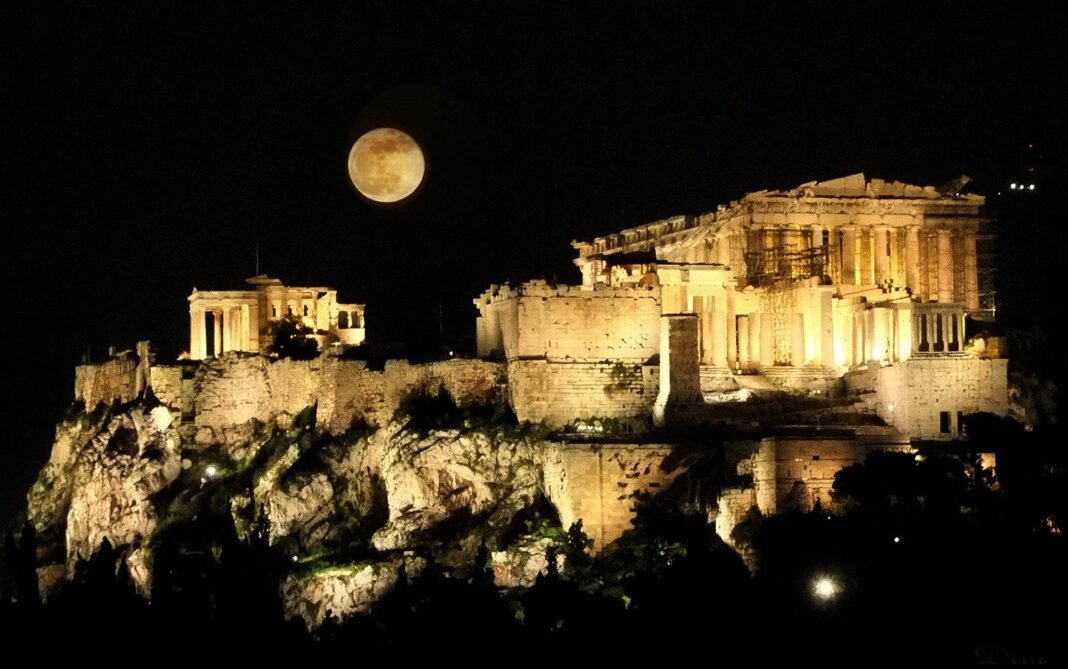
Archaeologists have uncovered Roman city churches and tombs at a Roman-era settlement in Egypt’s Kharga Oasis, offering rare insight into the region’s transformation during the early Coptic period. The findings, made at Ain al-Kharab in the New Valley, highlight the shift from pagan traditions to Christianity in one of Egypt’s most remote desert oases.
The Egyptian mission, operating under the Supreme Council of Antiquities, discovered ruins of residential buildings, two churches, cemeteries, and a mural depicting Jesus Christ healing the sick. Officials say the findings mark one of the most significant excavations in the western oases in recent years.
Major discoveries at Roman city churches site in Egypt
Excavators revealed entire residential blocks built of mudbrick, with some walls coated with plaster. Service areas included ovens for daily use, mudbrick storage structures, and large ground-placed pottery jars used to store grain and food. The team also recovered ostraca, pottery fragments, glass pieces, and stone artifacts, along with several burials.
Among the most notable discoveries is the mural portraying Jesus Christ healing a sick person—a rare example of early Christian iconography in Egypt’s desert oases.
Experts note that healing scenes were common in early Byzantine and Greek Christian art, hinting at cross-cultural influences that reached deep into Egypt’s western frontier.
Two churches were also unearthed. The larger, built in a basilica style, contained stone foundations and a central hall flanked by two aisles separated by square pillars. Service buildings were located to the south of the structure. The second church is smaller, rectangular in shape, and surrounded by seven external columns. Portions of its interior walls still bear Coptic inscriptions, with additional service buildings on its western side.
Historical and cultural significance
Tourism and Antiquities Minister Sharif Fathi has said the find underscores the richness and diversity of Egyptian civilization during a period of profound cultural transition. He noted that it offers deeper insight into Egypt’s religious transformation and highlights the tolerance and cultural diversity of the time.
Fathi praised Egyptian excavation teams for their efforts and reaffirmed the ministry’s commitment to supporting archaeological missions nationwide. He maintained that such projects enhance Egypt’s standing on the global cultural tourism map.
Mohamed Ismail Khaled, Secretary-General of the Supreme Council of Antiquities, described the discovery as crucial for understanding the early Coptic period in the Kharga Oasis. He emphasized the enduring significance of the western oases as centers of religious and social life throughout various historical periods.
Excavation leaders noted that previous seasons at the site revealed Roman-era structures later repurposed during both the Coptic and Islamic periods, showing continuous occupation and an evolving role in Egyptian history.


